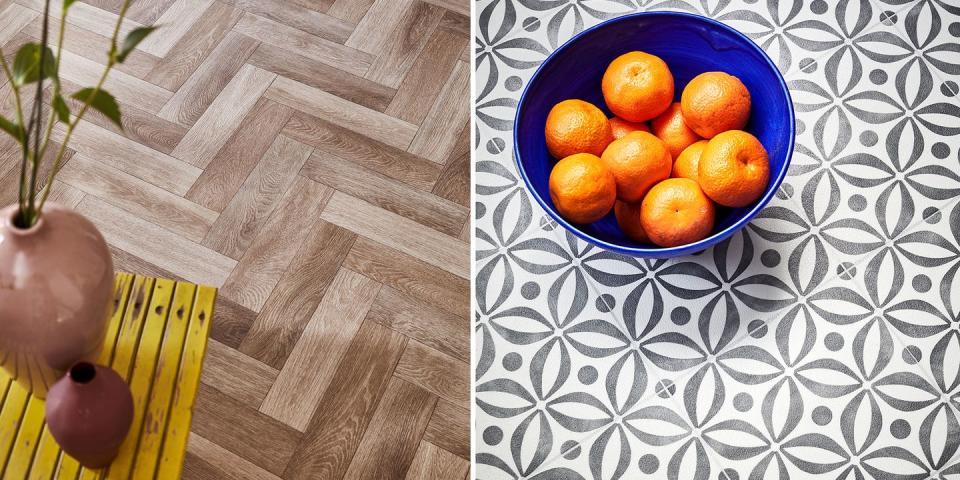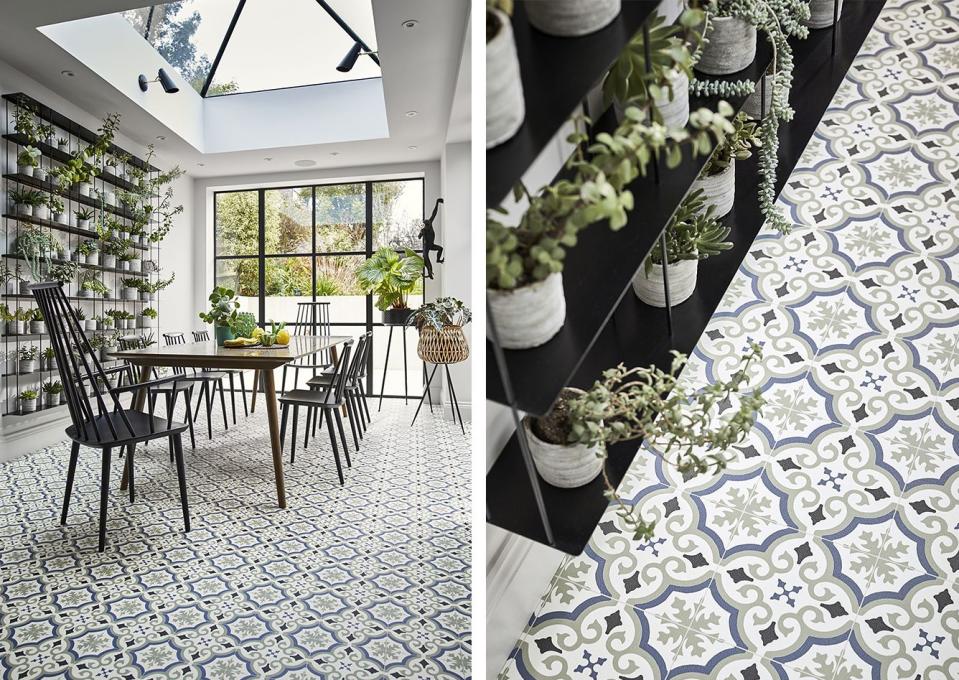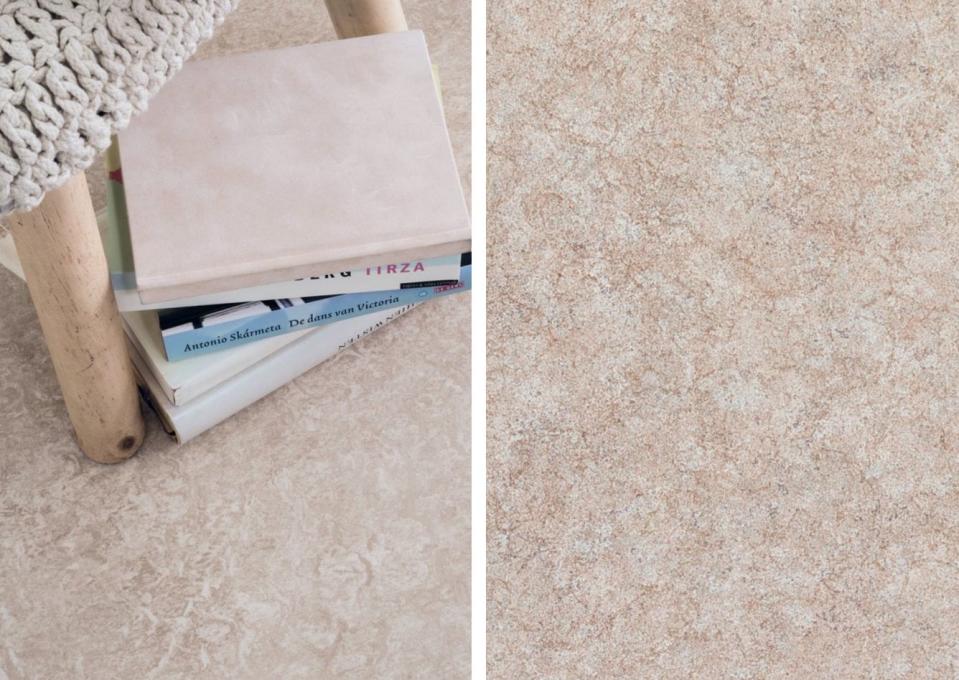An expert guide to vinyl flooring: how to choose, install and maintain your vinyl floor

Vinyl flooring is an affordable and durable way to mimic more expensive materials and flooring styles like hardwood, marble, or porcelain tiles. Available in planks, sheets, or tiles, advancements in vinyl design have led to a plethora of colour options, embossed surfaces, and natural effects.
'Vinyl flooring is a great and inexpensive way to add colour, pattern and personality to a room without compromising on safety or quality,' says David Snazel, Hard Flooring Buyer at Carpetright. 'In recent years there have been many developments in design and styles that mean the effects vinyl can create, such as tile or wood, are incredibly realistic.'

Why you should choose vinyl flooring
Vinyl is exceptionally hard-wearing, making it a very popular choice for high-traffic areas, bathrooms, and kitchens. 'It’s a great choice for busy families with children as it is highly durable, moisture proof and slip-resistant whilst being softer and warmer underfoot than laminate,' explains David.
When choosing vinyl flooring, it's important to consider the quality of design and detailing. To ensure it effectively replicates elements in wood, stone or porcelain, look at the design of knots and grains, the colouring and sheen of the finish, and the replication of naturally occurring imperfections like cracks and veins. 'Choosing a design that has a slightly worn look will make any flaws less noticeable,' adds David.

Vinyl planks, sheets, and tiles: what’s the difference?
Sheet vinyl flooring is the most affordable option due to its relative ease of installation. Available in a wide range of designs, sheet vinyl will cover most floors in one piece, with very few seams. The soft surface is waterproof and comfortable to walk on. Care must be taken when laying sheet vinyl as incorrect cutting can't be undone. Similarly, rips or damage can't be repaired seamlessly.
Vinyl plank flooring is more often designed to look like real wood or stone – more expensive options often feature textured slip-resistant finishes and bevelled edge. Vinyl planks are attractive and hardwearing and can be used in areas not recommended for wood and, with the correct adhesive, with underfloor heating. Vinyl is softer than stone and ceramic, so more comfortable underfoot and more forgiving to anything dropped on it.

Vinyl floor tiles are largely similar to sheet vinyl with the exception of size. Tiles will arrive individually cut, invariably installed with adhesive or occasionally with a peel-off backing. Vinyl tiles are very lightweight and easy to work – you usually don't need more than a craft knife to cut them – and the self-adhesive vinyl floor tiles make installation especially easy.
Standard vs. Luxury vinyl tiles
There are distinctions between standard vinyl flooring and luxury vinyl tiles (usually referred to as 'LVT'), as David explains: 'Luxury vinyl is a high-quality option that effectively emulates expensive flooring materials using a plank or tile installation technique. This offers the same durable and low maintenance benefits of vinyl whilst being compatible with underfloor heating for an added a touch of luxury and warmth.'

LVT is usually much thicker than standard vinyl, and semi-rigid in form. A lot of attention is paid to emulating more expensive materials with textured surfaces and bevelled edges that resemble real wood, or natural inconsistencies in colour and tone to resemble ceramic or stone.
Whilst certainly the best choice aesthetically, there are a few things you should consider. 'Although typically easy to maintain, consider the products you use carefully as not all chemicals are suitable and may cause discolouration,' says David. And of course, luxury vinyl tiles are a more expensive option.

How to lay vinyl flooring
Vinyl flooring should be laid on a clean, flat surface so you may need to allow for sub-floor preparation which will cost extra and take longer. This isn't a step that should be overlooked, as the quality of the sub floor will impact the look and longevity of your vinyl flooring.
'Wherever possible it is best to have a professional measure and fit flooring as they will ensure all measurements are accurate. Any mistakes made will likely incur additional costs, which could negate any saving you may have made by selecting an affordable vinyl,' says David.

How to clean vinyl floors
This is a relatively easy one, as vinyl is made to be durable, and resistant to heat and moisture, it's typically easy to clean. David says: 'Warm water and light soap will usually be enough to remove stains however bicarbonate of soda can also be used on a tough stain. Loose debris, dust and dirt can be removed regularly with gentle vacuuming or a soft brush.'
• Shop the House Beautiful vinyl flooring at Carpetright
Follow House Beautiful on Instagram.
You Might Also Like

 Yahoo Finance
Yahoo Finance 
